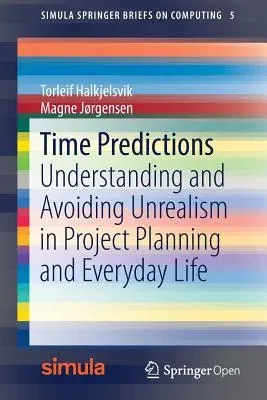Torleif Halkjelsvik
(Author)Time Predictions: Understanding and Avoiding Unrealism in Project Planning and Everyday Life (2018)Paperback - 2018, 16 March 2018

Qty
1
Turbo
Ships in 2 - 3 days
In Stock
Free Delivery
Cash on Delivery
15 Days
Free Returns
Secure Checkout

Part of Series
Simula Springerbriefs on Computing
Print Length
110 pages
Language
English
Publisher
Springer
Date Published
16 Mar 2018
ISBN-10
3319749528
ISBN-13
9783319749525
Description
Product Details
Book Edition:
2018
Book Format:
Paperback
Country of Origin:
NL
Date Published:
16 March 2018
Dimensions:
23.39 x
15.6 x
0.66 cm
ISBN-10:
3319749528
ISBN-13:
9783319749525
Language:
English
Location:
Cham
Pages:
110
Publisher:
Weight:
185.97 gm